Effect of Ca-Mg compound modifier on microstructure and plasicity in cold-rolled high strength steel
-
摘要: 利用光学显微镜(OM)、透射电镜(TEM)和电子背散射衍射(EBSD)等设备研究了Ca-Mg复合变质剂对冷轧超高强钢铸坯中TiN粒子析出的影响机制,并对显微组织在各工序的遗传性及塑性改善进行了系统对比。结果发现:添加变质剂以后,铸坯中TiN第二相粒子尺寸明显变小,数量增多,分布更弥散;添加改质剂后钢坯、热轧钢板中沿晶界铁素体减少,冷轧退火后显微组织变细;与未添加变质剂试验钢比,屈服强度和屈强比提高,材料折弯、扩孔率得到改善。变质剂的添加改变了钢液中TiN形核机制。弥散的TiN可以细化铸态组织,并通过遗传效应对热轧、冷轧连退组织产生影响,改善力学性能和成型性能。Abstract: The influence mechanism of Ca-Mg compound modifier on TiN precipitation in ingot of producing ultra-high cold-rolled strength steel were studied by means of optical microscope (OM), transmission electron microscope (TEM) and electron backscatter diffraction (EBSD), etc. Andmicrostructure hereditary effect and plastic improvement at various process steps were compared systematically. The result showed that the size of TiN reduced with the addition of modifier, whereas its density increased with a relatively uniform distribution. Addition of modifier decreased the volume fraction of ferrite along grain boundary for both ingot and hot rolled strip, and resulted in fine microstructure in the as-cold rolled sheet. Comparing modifier-free sample, the yield strength, yield ratio dramatically increased and the bending properties and hole expanding ratio improved for the modifier-bearing sheet. The nucleation mechanism of TiN was changed by the addition of Ca-Mg compound modifier. The dispersed TiN particles could effectively refine the casting microstructure, and the microstructure for hot-rolled or cold-rolled were all refined effectively by hereditary effect which could significantly improve the mechanical properties and formability of steel.
-
Key words:
- high strength steel /
- TiN /
- modifier /
- microstructure /
- mechanical property /
- formability
-
0. 引言
冷轧超高强钢是车身减重和高强化的理想材料,可以在提高碰撞性能前提下有效减少能源消耗[1-3]。冷轧超高强钢主要指抗拉强度大于700 MPa的双相钢、复相钢、淬火配分钢等,多用于乘用车A柱、B柱、座椅结构件、防撞梁等结构件或加强件部位,厚度在0.8~2.0 mm,零件成型主要以连续辊压或冲压为主,且多带有冲孔、翻边工艺,对材料的成型性能要求较高[4]。显微组织均匀性和细化程度对带钢成型性能起决定性的作用[5-6]。高强钢种加入Ti,具有细化显微组织、改善韧、塑性的作用[7-8]。但是,若炼钢、热轧过程中,高温析出的第二相粒子发生粗化,对奥氏体晶界的钉扎失去平衡而发生“二次再结晶”现象,会加剧“混晶”现象。“混晶”组织遗传给冷轧-连退带钢,使晶界协调变形能力降低,反而导致成型性能恶化[9-11]。钢中带棱角的粗大第二相粒子(如TiN)在冷成型过程中发生破碎使微观裂纹形核,加剧裂纹扩展。因此减少粗大第二相粒子,并有效提高显微组织均匀性是提高冷轧超高强钢成型性能的关键。
炼钢、连铸过程中受高温扩散速度影响,钢水中析出的TiN粒子比较粗大。带尖角且脆而硬的 TiN粒子在冷成型过程中容易发生破碎,形成微裂纹源,导致带钢成型性能下降。在实际生产中,通过增加软吹时间、延长钢水静置时间使大颗粒TiN上浮,或提高连铸保护渣碱度等手段可以去除部分粗大的液析TiN。但是上述工艺严重影响生产节奏,而且效果有限。热力学计算发现,TiN的临界析出温度约为1500~1550 ℃,在连铸过程中会随着凝固前沿Ti、N浓度的提高而迅速长大[12]。此外,TiN长大除了与Ti、N含量有关外,还与形核方式、形核数量密切相关。当钢水中形核质点增多,TiN可以在更多位置形核析出,快速消耗钢种Ti、N,抑制TiN的粗化[13-15]。闫志杰[16]等人研究发现,通过向钢中添加一定量的稀土变质剂,增加高温形核质点,不仅能够使碳化物粒子尺寸更加细小,分布更加弥散均匀,还能起到细化铸坯组织作用,且其特性还会“遗传”给热轧、冷轧-连退钢板。显微组织的细化,使晶界密度增加。由于微裂纹的萌生、扩展主要依靠晶界,晶界密度的提高,增加了裂纹传播的难度,这是翻边、冲孔等关键成型指标提高的根本原因。通过向钢种添加变质剂改善钢种第二相粒子粗化,不影响钢水成分,对产品质量稳定性和客户认可度具有重要作用。
笔者所在课题组以冷轧超高强汽车结构钢为研究对象,全流程研究了Ca-Mg复合变质剂对试验钢铸态、热轧态和冷轧+连退态的显微组织、力学性能和成型性能的影响,并通过热力学软件对钢中TiN的析出行为进行了计算,以期为实际生产中产品质量改进提供理论依据。
1. 试验材料与方法
选用国内某钢厂冷轧超高强汽车结构钢作为研究对象,主要化学成分如表1所示。试验钢经50 kg真空感应炉冶炼,模铸坯用相同的热轧、冷轧工艺轧至2.0 mm厚度,在实验室用相同的工艺(图1)进行退火处理。
表 1 试验钢的主要化学成分Table 1. Main chemical compositions of the experimental steels% 编号 C Si Mn S P Nb+Ti+Cr Alt N 改质剂 1#钢 ≤0.35 ≤1.50 ≤2.50 0.015 ≤0.030 ≤0.200 ≥0.020 ≤0.007 未添加 2#钢 ≤0.35 ≤1.50 ≤2.50 0.015 ≤0.030 ≤0.200 ≥0.020 ≤0.007 添加 切取铸坯试样,利用碳复型萃取法制备第二相粒子的碳复型样品,借助JEM-2100F透射式电子显微镜(TEM)观察钢中第二相粒子的形貌,并用其自带能谱仪(ESD)对第二相粒子化学成分进行分析;切取铸坯、热轧和退火态钢板试样,经机械抛光后制备金相试样,用尼康光学显微镜观察显微组织;切取热轧和冷轧退火态的拉伸试样、折弯试样和扩孔试样,用电子万能试验机、折弯试验机和扩孔试验机进行力学性能和成型性能评价;利用Thermo-cal 热力学软件对钢中TiN析出行为进行热力学计算。
2. 试验结果与讨论
2.1 析出相与显微组织
试验钢铸坯中第二相粒子形貌及化学成分如图2所示,可见,1#钢未添加变质剂,铸坯中第二相粒子形貌多呈方型且带尖角,统计尺寸在50 ~ 80 nm,个别尺寸达到微米级;2#钢添加变质剂后铸坯中粒子尺寸明显减小,在20 ~ 40 nm,分布更加均匀。1#钢中粗大的第二相粒子多在晶界处聚集分布,2#钢中第二相粒子在晶界和晶内均匀弥散分布。利用能谱分析了1#钢中典型第二相粒子的化学成分,结果显示其化学成分比较均匀,芯部与外壳均为Ti的碳氮化物,属于典型独立形核析出现象;2#钢中第二相粒子芯部与外壳有显著差异,芯部主要由Ca、Mg的氧、硫化物构成,外围则主要以Ti、N为主,属于典型的质点形核,芯部能谱分析结果如图2(d)所示,外部化学成分则与图2(b)相似。分析认为,Ca-Mg复合型变质剂与钢水中的O、S结合形成的CaO、CaS、MgO、MgS高温质点增加了TiN形核析出的核心[17-20],促进了TiN的形核及快速析出,从而避免了其快速长大,是2#钢中Ti的碳氮化物更加细小、弥散的主要原因。
带钢显微组织对比如图3所示。1#钢铸坯有大量沿晶铁素体,2#钢中沿晶铁素体消失,如图3(a)、(d)所示;受显微组织遗传特性的影响,2#钢热轧后块状沿晶铁素体减少,显微组织细化明显,结果如图3(b)、(e)所示;经60%冷轧+相同工艺退火后,钢板显微组织均为铁素体+马氏体两相组织,但是2#钢显微组织更加细小,均匀,如图3(c)、(f)所示。变质剂的添加,抑制铸坯、热轧钢板沿晶铁素体的析出,使冷轧-退火态显微组织更加细小,对改善组织均匀性具有显著效果。
图4为带钢经冷轧-退火后的电子背散射衍射(EBSD)晶粒取向成像图(COM)和有效晶粒尺寸分布情况。由于冷轧带钢为铁素体基体的铁素体+马氏体双相组织,EBSD以BCC为主要物相进行分析。对比图4(a)、(c)可以发现添加变质剂后,显微组织明显细化,大块状铁素体晶粒显著减少。经统计发现,未添加变质剂的1#钢有效晶粒尺寸为2.616 μm,添加变质剂后的2#钢平均晶粒尺寸降低至2.225 μm,尺寸大于2.0 μm的铁素体晶粒显著减少。结合图2、3可以看出,变质剂的添加抑制铸坯沿晶铁素体析出,细小而弥散的TiN全流程细化显微组织,是2#钢有效晶粒尺寸降低的主要因素。
2.2 力学性能与成型性能
如表2所示,用相同的热轧、冷轧-退火工艺处理后,添加变质剂的2#钢板的抗拉强度、屈服强度比未加变质剂的1#钢板大幅提高,尤其是2#钢的屈强比显著升高。根据Hall-Petch关系(式1),显微组织越细小,屈服强度越高[21]。由此可以推断,钢板强度、屈强比的提高是由细晶强化带来的。
$$ \sigma ={\sigma }_{0}+k\cdot \sqrt d $$ (1) 其中,σ为屈服强度;σ0为与材料有关的常数;k为常数,d为平均晶粒尺寸。
结合图4可以看出,添加改质剂后2#钢的有效晶粒尺寸显著降低,小于1 μm的铁素体晶粒增加,是试验钢强度提高的主要原因。
采用断后伸长率表征单轴拉伸状态下钢板塑性,以扩孔率、折弯(180°拍扁)表征材料局部变形过程中的成型性能。对比可以看出,变质剂明显提升2#钢的塑性和成型性能。晶粒细化后,材料在变形过程中晶界协调变形的能力提高,使单轴拉伸的延伸率提高。此外,由于多晶材料的强度和塑性匹配受变形过程中变形抗力和晶界协调的双重作用,如公式(2)所示,随着有效晶粒尺寸的降低,晶界密度提高。晶界密度的提高使其协调变形能力提高,并且使裂纹扩展的路径更加复杂,这是扩孔率提高、折弯性能改善的关键因素。
$$ {S}_{V}=2{d}^{-1} $$ (2) 式中,Sv是单位体积的晶界面积(表征晶界密度);d是晶粒尺寸。
2.3 变质剂对组织和性能影响机理
利用Thermo-cal热力学软件对TiN平衡态下熔解/析出行为进行了计算,结果如图5所示。Ti含量大于0.02%时,TiN开始自液相中析出,体积分数随着Ti、N含量的提高而明显提高。试验钢在实际生产中Ti含量控制范围为0.09%~0.11%、炼钢N控制水平在0.003%~0.0006%,TiN在钢液中即开始析出。当Ti含量高、N含量波动范围较大时,液相中析出的TiN颗粒就大小不一。尤其是在Ti、N原子液相中扩散速度较快,凝固过程中随着固液两相界面的推移,凝固前端Ti、N浓度要远高于钢液平均水平,极易造成液相中TiN长大、粗化。TiN属于氯化钠型立方结构,液相中析出的TiN宏观上带有明显的立方结构特征。结合图2可以看出,TiN多呈方形、带尖角形貌,其质脆而硬,在变形过程中容易导致应力集中,是微裂纹萌生的源头。当钢中Ti、N波动较大,粗大TiN析出的数量多少不一,对塑性恶化的影响也不同,从而导致实际生产中折弯、扩孔性能出现明显差异。
表 2 变质剂对试验钢力学性能和成型性能的影响Table 2. Effect of modifier on the mechanical properties and forming performance钢号 力学性能 成型性能 抗拉强度/MPa 屈服强度/MPa 屈强比 伸长率/% 扩孔率/% 180°折弯 d=0a 1#热轧 723 490 0.68 13 25 不开裂 2#热轧 795 564 0.71 16 31 不开裂 1#冷轧 984 683 0.69 20 35 开裂 2#冷轧 1000 783 0.78 25.5 55 不开裂 图6为钢水中Ti、N在一定区域扩散时,无形核质点时均匀形核与有高温形核质点时非均匀形核两种模式下[Ti]、[N]扩散及形核、长大的示意。
由图6可知,当钢水中无高温质点时,[Ti]、[N]更倾向于通过长程扩散,依附于已经析出的TiN的界面析出,而且随着[Ti]、[N]的逐渐消耗,这种倾向更加明显,从而导致大范围的原子迁移,造成TiN粗化;当添加变质剂后,Ca、Mg等金属与钢水中S结合生成CaS、MgS类高温,为TiN的就近析出提供了界面,可快速消耗钢水中的[Ti]、[N],就近析出抑制了Ti、N原子的长程扩展,可以有效改善第二相粒子粗化现象[22-23]。结合图5,内变质剂作为形核质点,并不能改变TiN析出温度或者析出量,但是可以通过增加形核质点的方式快速消耗钢中的[N]、[Ti],防止TiN聚集长大。形核质点的增多,降低了[N]、[Ti]在液相中的扩散半径,可以有效抑制TiN异常长大。细小弥散的TiN不仅能够起到钉扎高温奥氏体晶界迁移,细化显微组织的作用,还能通过增加晶界密度的方式增加裂纹扩展阻力,起到改善成型性能的作用。
3. 结论
系统研究了Ca-Mg复合变质剂对冷轧超高强汽车结构钢中的第二相粒子、显微组织遗传、力学性能和成型性能的影响,得到如下结论:
1)添加变质剂的钢中,TiN第二相粒子尺寸变小,密度增大。变质剂主要通过影响第二相粒子的形核析出行为,对TiN进行细化,进而提高其弥散程度。
2)钢液中TiN粒子的弥散析出显著细化铸态组织,受组织遗传影响,热轧态和冷轧+连退组织得到显著细化。
3)钢中TiN粒子的弥散析出和显微组织的细化使试验钢的显微组织和力学性能得到明显改变,添加变质剂的试验钢屈服强度和屈强比提高明显。
4)受第二相粒子、显微组织细化影响,添加变质剂的试验钢局部成型性能得到明显改善,折弯、扩孔性能极大提升。
-
表 1 试验钢的主要化学成分
Table 1. Main chemical compositions of the experimental steels
% 编号 C Si Mn S P Nb+Ti+Cr Alt N 改质剂 1#钢 ≤0.35 ≤1.50 ≤2.50 0.015 ≤0.030 ≤0.200 ≥0.020 ≤0.007 未添加 2#钢 ≤0.35 ≤1.50 ≤2.50 0.015 ≤0.030 ≤0.200 ≥0.020 ≤0.007 添加 表 2 变质剂对试验钢力学性能和成型性能的影响
Table 2. Effect of modifier on the mechanical properties and forming performance
钢号 力学性能 成型性能 抗拉强度/MPa 屈服强度/MPa 屈强比 伸长率/% 扩孔率/% 180°折弯 d=0a 1#热轧 723 490 0.68 13 25 不开裂 2#热轧 795 564 0.71 16 31 不开裂 1#冷轧 984 683 0.69 20 35 开裂 2#冷轧 1000 783 0.78 25.5 55 不开裂 -
[1] Zhao Zhengzhi, Niu Feng, Tang Di,et al. Microstructure and properties of ultra-high strength cold-rolled dual phase steel[J]. Journal of University of Science and Technology Beijing, 2010,32(10):1287−1291. (赵征志, 牛枫, 唐荻, 等. 超高强度冷轧双相钢组织与性能[J]. 北京科技大学学报, 2010,32(10):1287−1291. [2] González R, García J O, Barbés M A, et al. Ultrafine grained HSLA steels for cold forming[J]. Journal of Iron & Steel Research, 2010,(10):53−59. [3] Gao B, Chen X, Pan Z, et al. A high-strength heterogeneous structural dual-phase steel[J]. Journal of Materials Science, 2019,54(19):66−72. [4] Dai Qifeng, Song Renbo, Guan Xiaoxia. Microstructure and properties of ultra-high strength ferrite-matensite dual phase steel tested under dynamic tensile conditions[J]. Materials Engineering, 2013,(4):6−11. (代启锋, 宋仁伯, 关小霞. 超高强铁素体-马氏体双相钢在动态拉伸变形条件下组织和性能研究[J]. 材料工程, 2013,(4):6−11. doi: 10.3969/j.issn.1001-4381.2013.04.002 [5] Narayanasamy R, Parthasarathi N L, Narayanan C S. Effect of microstructure on void nucleation and coalescence during forming of three different HSLA steel sheets under different stress conditions[J]. Materials & Design, 2009,30(4):1310−1324. [6] Parilák L, Doják J. Influence of microstructure on micromechanisms of failure in HSLA steels[J]. International Journal of Pressure Vessels and Piping, 1993,55(2):353−360. [7] Wen B, Song B, Pan N, et al. Effect of SiMg alloy on inclusions and microstructures of 16Mn steel[J]. Ironmaking & Steelmaking, 2013,38(8):577−583. [8] Abbasi S M, Morakabati M, Mahdavi R, et al. Effect of microalloying additions on the hot ductility of cast FeNi36[J]. Journal of Alloys and Compounds, 2015,639:602−610. doi: 10.1016/j.jallcom.2015.03.167 [9] Jung J, Park J, Kim J, et al. Carbide precipitation kinetics in austenite of a Nb–Ti–V microalloyed steel[J]. Materials Science and Engineering: A, 2011,528(16−17):5529−5535. doi: 10.1016/j.msea.2011.03.086 [10] Wang Z, Sun X, Yang Z, et al. Carbide precipitation in austenite of a Ti–Mo-containing low-carbon steel during stress relaxation[J]. Materials Science and Engineering: A, 2013,573:84−91. doi: 10.1016/j.msea.2013.02.056 [11] Ghosh A, Ray A, Chakrabarti D, et al. Cleavage initiation in steel: Competition between large grains and large particles[J]. Materials Science and Engineering: A, 2013,561:126−135. doi: 10.1016/j.msea.2012.11.019 [12] (李永亮. 700 MPa级高强度汽车大梁钢成分设计与组织控制研究[D]. 北京科技大学, 2017.)Li Yongliang. Study on composition design and microstructure control about 700 MPa grade high strength beam steel for vehicles[D]. Beijing: University of Science and Technology Beijing, 2017. [13] He B, Li J, Shi C B, et al. Effect of Mg addition on carbides in H13 steel during electroslag remelting process[J]. Metallurgical Research and Technology, 2018,115(5):256−261. [14] Lu Yong, Peng Jun, Cai Changkun, et al. Rare earth Ce on thermodynamics of titanium containing inclusions in steel and its experimental research[J]. Iron Steel Vanadium Titanium, 2019,40(3):93−98. (吕勇, 彭军, 蔡长焜, 等. 稀土铈对钢中含钛夹杂物析出行为的研究[J]. 钢铁钒钛, 2019,40(3):93−98. [15] Georgy V, Hideaki S. Effect of primary deoxidation products of Al2O3, ZrO2, Ce2O3 and MgO on TiN precipitation in Fe-10%Ni alloy[J]. ISIJ International, 2001,41(7):748−756. doi: 10.2355/isijinternational.41.748 [16] (闫志杰, 王睿, 康燕, 等. 一种用于细化钢铁中碳化物的变质剂, 中国: CN107686872B[J].2019-12-10.)Yan Zhijie, Wang Rui, Kang Yan, et al. A modifier using for refining the carbide in steel, China: CN107686872B[J]. 2019-12-10. [17] Ge Yunzong, Yan Huicheng, Wang Jianjun, et al. Formation and control of CaS inclusion in gear steel 20CrMnTiH1[J]. Steelmaking, 2013,29(3):23−27. (葛允宗, 颜慧成, 王建军, 等. 20CrMnTiH1齿轮钢中CaS夹杂的形成与控制[J]. 炼钢, 2013,29(3):23−27. [18] Hiroki O, Hideaki S. Effects of N, C and Si contents and MgO on dispersion of TiN particles in Fe-1.5%Mn-0.05(0.15)%C alloy[J]. ISIJ International, 2007,47(2):197−206. doi: 10.2355/isijinternational.47.197 [19] Kim H S, Chang C, Lee H. Evolution of inclusions and resultant microstructural change with Mg addition in Mn/Si/Ti deoxidized steels[J]. Scripta Materialia, 2005,53(11):1253−1258. doi: 10.1016/j.scriptamat.2005.08.001 [20] Kimiaki S, Hideadki S. Grain-growth-inhibiting effects of primary inclusion particles of ZrO2 and MgO in Fe-10 mass Pct Ni alloy[J]. Metallurgical and Materials Transactions A, 2000,31(A):1213−1223. [21] Zhao Mingchun, Shan Yiyin, Xiao Furen, et al. Study on formation and strength & toughness behavior of acicular ferrite in p pipeline steel[J]. Materials Science & Technology, 2001,9(4):356−358. (赵明纯, 单以银, 肖福仁, 等. 管线钢中针状铁素体的形成及其强韧性的分析[J]. 材料科学与工艺, 2001,9(4):356−358. doi: 10.3969/j.issn.1005-0299.2001.04.005 [22] Zheng Haoyong, Wang Meng, Wang Xiuxing, et al. Analysis of heterogeneous nucleation on rough surfaces based on Wenzel model[J]. Acta Phys. Sin., 2011,60(6):664021−664025. (郑浩勇, 王猛, 王修星, 等. 基于Wenzel模型的粗糙界面异质形核分析[J]. 物理学报, 2011,60(6):664021−664025. [23] (孙杰. 铝异质形核机理研究[D]. 上海: 上海大学, 2018.)Sun Jie. Heterogeneous nucleation mechanism of aluminum on substrates[D]. Shanghai: Shanghai University, 2018. 期刊类型引用(1)
1. 苏超杰,罗志华,刘圣勇,张丽强. 支架用热轧变形高钛钢板TiC析出及力学性能分析. 锻压技术. 2023(08): 118-124 .  百度学术
百度学术其他类型引用(1)
-





 下载:
下载:








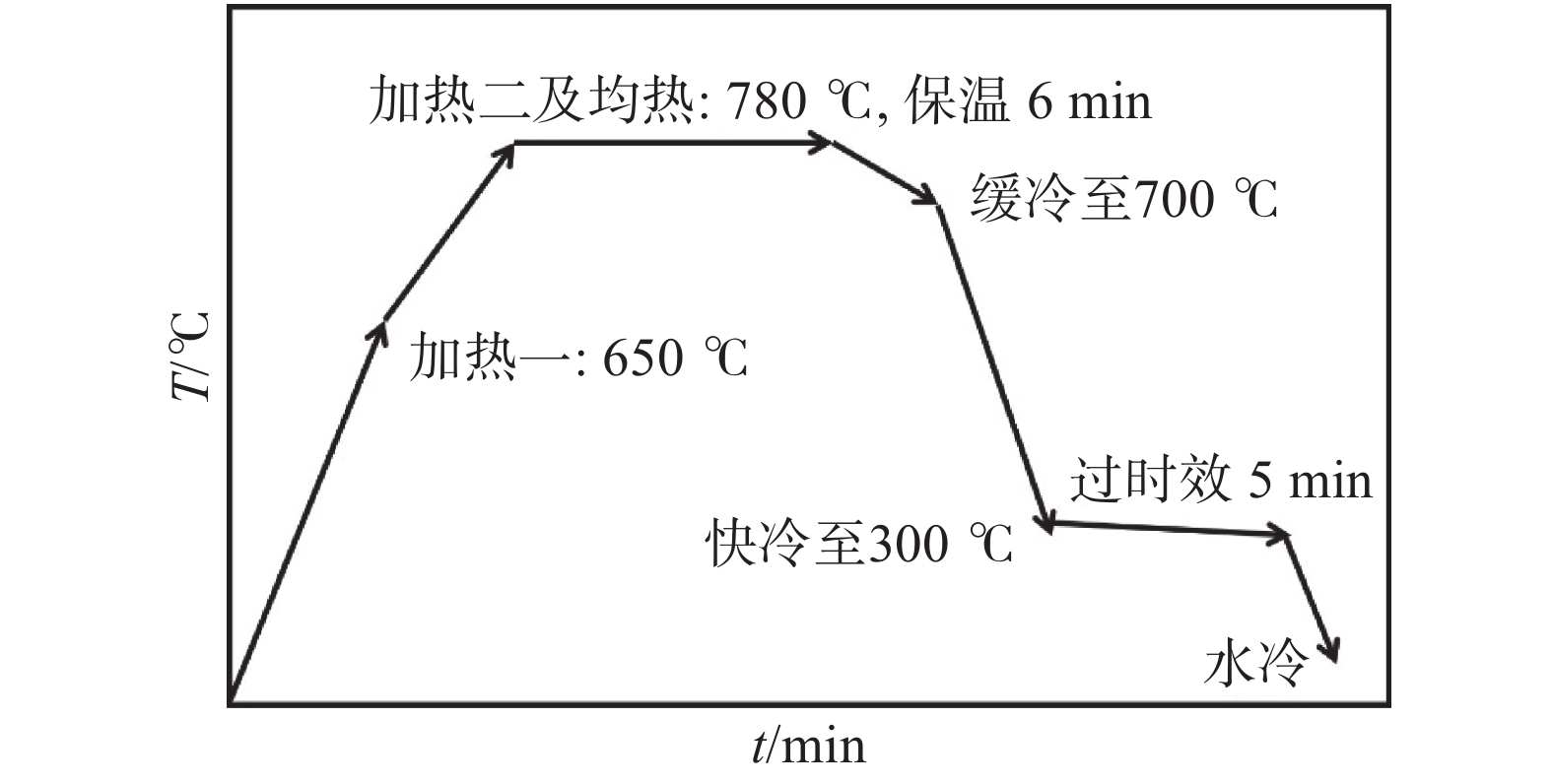
 下载:
下载:
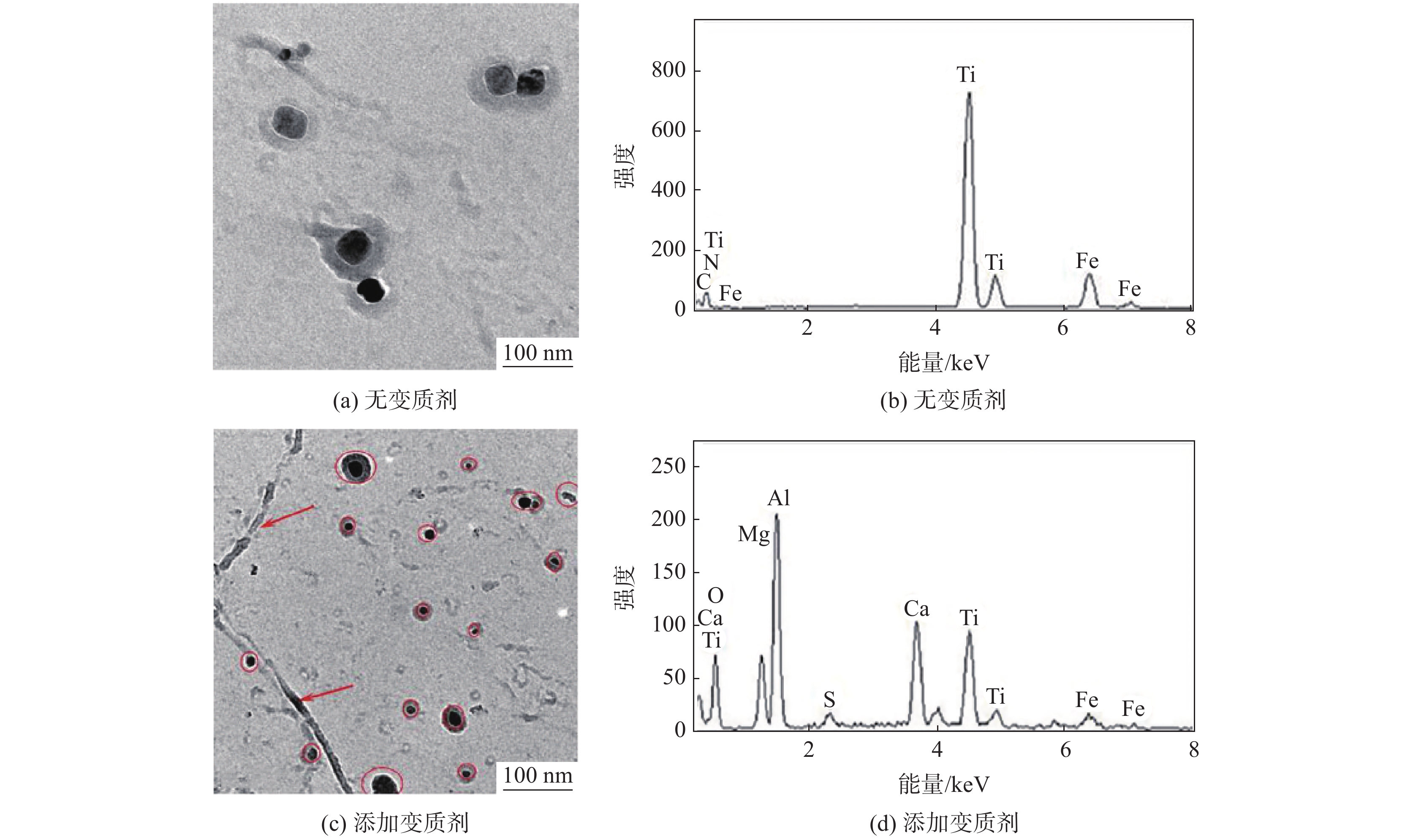
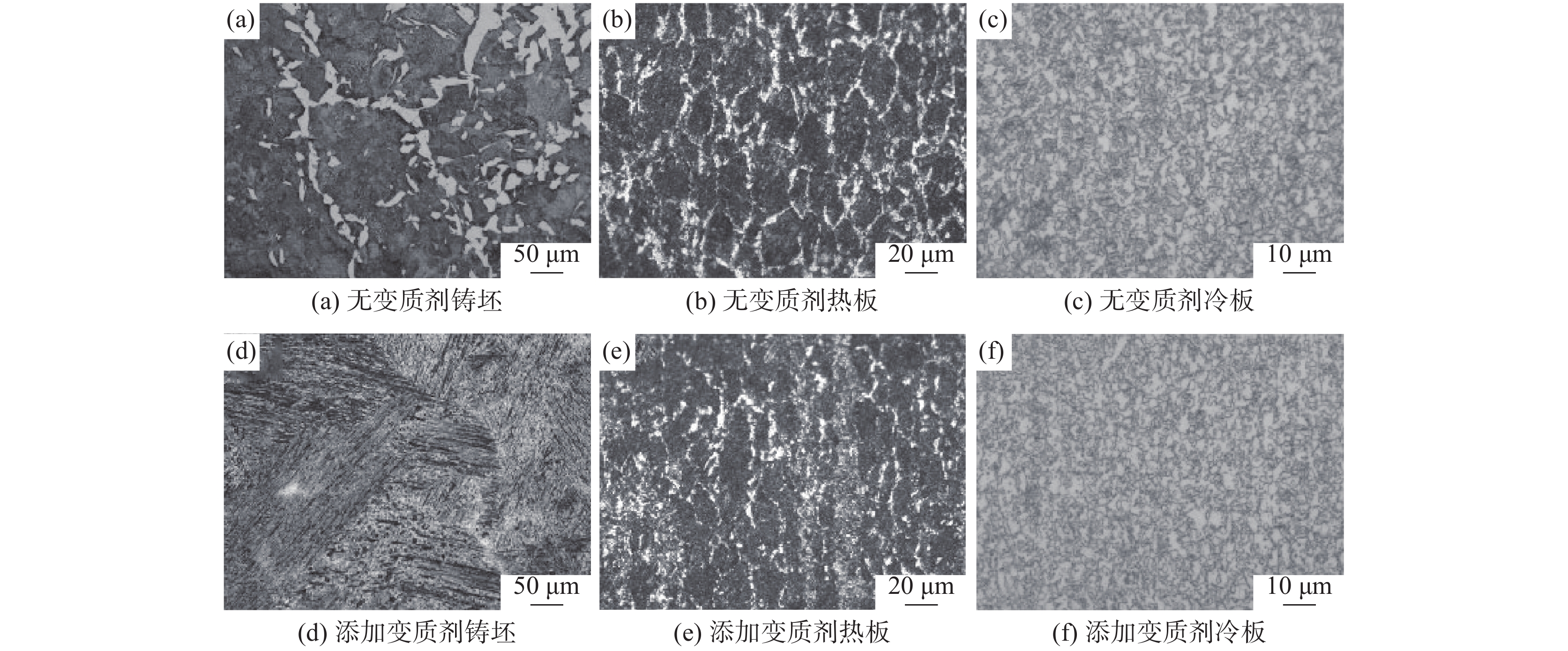
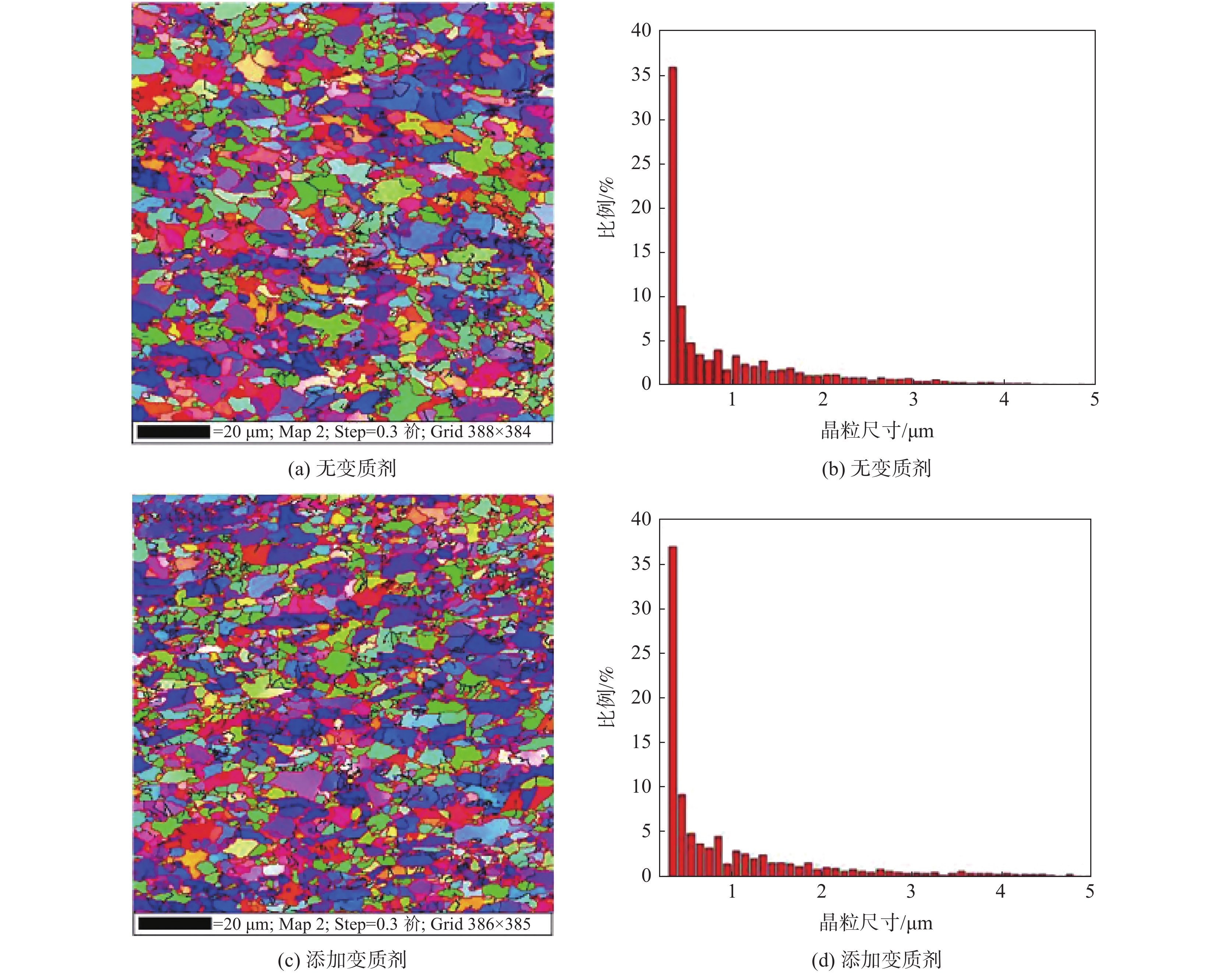

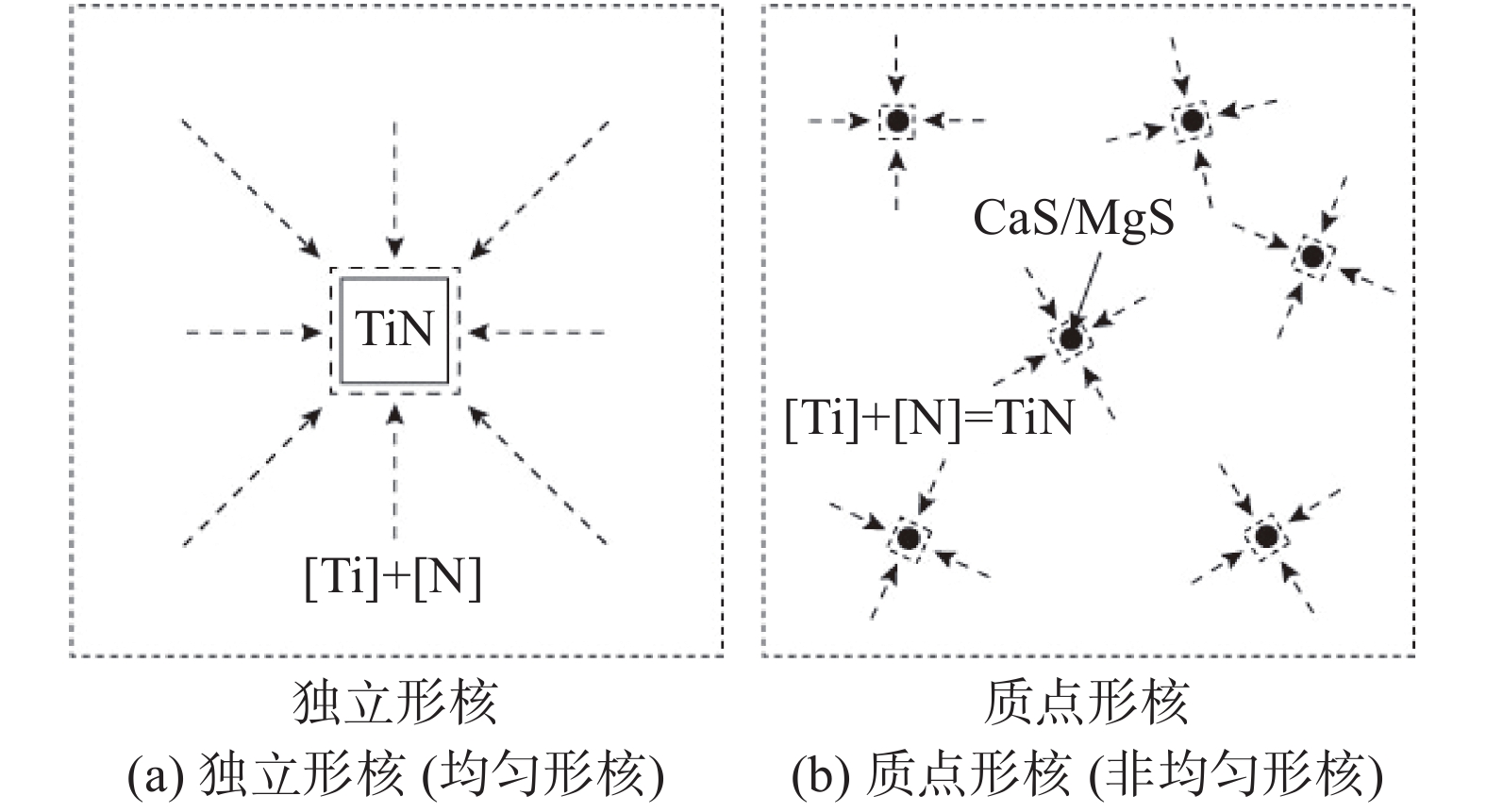
 百度学术
百度学术







